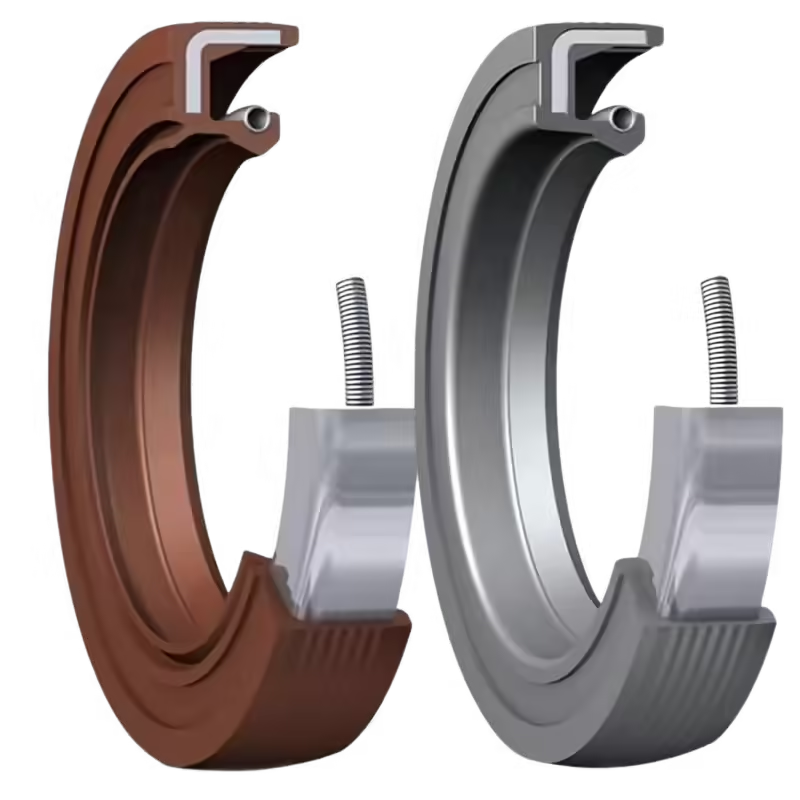How to Make Gaskets from Gasket Material
Introduction
Overview of Gaskets and Their Importance
Gaskets are essential sealing components used across various industrial applications to ensure the integrity and efficiency of machinery and systems. They serve as barriers between two surfaces, preventing leaks of fluids, gases, or other substances under different operating conditions. Understanding the process of making gaskets from gasket materials is crucial for achieving optimal sealing efficiency, leak prevention, and operational safety.
Selecting the right material for gasket manufacturing significantly impacts performance. The choice of material affects the gasket’s ability to withstand temperature variations, pressure levels, and exposure to chemicals, thereby ensuring reliable operation and longevity.
Key Considerations
When making gaskets, several factors must be considered:
- Material Selection: The type of gasket material chosen directly influences performance, durability, and suitability for specific applications.
- Manufacturing Methods: Different techniques, such as molding and CNC cutting, offer varying levels of precision, consistency, and scalability.
- Supplier Communication: Collaborating with suppliers to obtain customized solutions ensures that the gaskets meet precise specifications and application requirements.


1. Understanding Gasket Materials
Types of Gasket Materials
- Rubber:
- Nitrile, EPDM, Silicone, Neoprene: These materials are prized for their resistance to fluids, temperature variations, and pressure. They are widely used in applications ranging from automotive engines to plumbing systems.
- Cork:
- Commonly used in lower-pressure applications, cork offers excellent compressibility, making it ideal for applications where flexibility is essential.
- Fibers:
- Aramid, Cellulose: These materials are chosen for their strength and resistance to wear, making them suitable for heavy-duty applications where durability is paramount.
- Metal:
- Spiral Wound or Metal Jacketed Gaskets: Metal gaskets are designed for high-pressure and extreme temperature environments, often found in industrial machinery and power plants.
- Composites and Others:
- Advanced materials engineered for specific chemical or thermal conditions provide tailored solutions for specialized applications.
Choosing the Best Material
Factors Affecting Material Choice:
- Temperature: Determines the material’s ability to maintain integrity under thermal stress.
- Pressure: Ensures the gasket can withstand operational pressures without failing.
- Chemical Compatibility: Prevents degradation or reaction with the substances being sealed.
- Mechanical Stresses: Accounts for forces such as vibration or movement that may impact gasket performance.
Common Application Examples:
- Automotive: Engine components, exhaust systems.
- Plumbing: Pipe joints, fittings.
- Industrial Machinery: Pumps, compressors.
DRO’s Recommendation: Based on our extensive experience, selecting the right rubber material is critical and depends on the specific conditions in which the gasket will operate. Our team can provide expert guidance tailored to your application details to ensure optimal performance.
2. Preparing the Work Area and Tools
Required Tools and Equipment
- Measuring Tools: Calipers, rulers, and templates are essential for precise dimensioning, ensuring that the gasket fits perfectly within its designated space.
- Cutting Tools: Utility knives, CNC machines, and vibration cutting tools are used to create custom shapes and sizes.
- Safety Equipment: Protective gloves, goggles, and handling equipment are necessary to ensure safe operation during the gasket-making process.
Why Molded Gaskets Are Preferred
While CNC vibration cutters are valuable for certain applications, molding (模压技术) is often preferred due to its superior consistency and high-quality output. Custom molds allow for better control over material distribution and thickness, enhancing the gasket’s performance and longevity.
3. Measuring and Designing the Gasket
Key Considerations in Design
- Flange and Bolt Hole Dimensions: Accurate measurements are critical to ensure a perfect fit between the gasket and flange, preventing leaks and ensuring structural integrity.
- Template Creation: Utilizing drawing or digital tools to create precise templates facilitates accurate cutting and shaping.
- Thickness and Compression Requirements: The gasket must be of the correct thickness to provide adequate sealing without being over-compressed, which could lead to material failure.
The Importance of Communication
Effective communication with gasket manufacturers is essential. If there is uncertainty about material selection or design specifications, reaching out with detailed information about the intended application allows manufacturers to provide the best possible solutions, ensuring long-term performance and reliability.
4. Cutting the Gasket Material
Manual Cutting Methods
- Utility Knives and Gasket Punches: Ideal for basic, smaller-scale production, these tools allow for precise cutting along template lines, ensuring the gasket meets the required specifications.
Why We Use Molded Gaskets
Even with advanced CNC cutting equipment, molded gaskets offer superior material consistency and fewer defects. Rubber sheets used in cutting machines are often made from recycled materials, which can compromise quality and reliability compared to freshly molded parts. Molded gaskets ensure higher performance and durability, especially in demanding applications.
Precision Cutting
- CNC Vibration Cutting: Best suited for high-precision, lower-volume applications where creating molds is not feasible.
- Laser Cutting: An excellent alternative for intricate shapes, providing higher accuracy and reducing material waste.
5. Shaping and Finishing the Gasket
Edge Smoothing and Finishing
After cutting, it is essential to ensure that there are no sharp edges left, as these can cause leaks or fitment issues. Trimming and sanding help achieve uniform thickness and clean edges, enhancing the gasket’s sealing capability.
Bolt Holes
Using punches or drills to create clean bolt holes ensures proper attachment to the flange, maintaining the gasket’s integrity and performance.
Inspection for Quality
Quality assurance involves:
- Fit Precision: Ensuring the gasket fits perfectly without any gaps or misalignments.
- Thickness and Uniformity: Verifying that the gasket meets the required thickness and maintains uniformity throughout to meet performance standards.
Quality Assurance Note: While CNC cutting and manual methods are effective, molded gaskets provide a more stable and higher-quality final product, especially suitable for demanding environments.
6. Testing and Quality Control
Pressure and Leak Testing
Gaskets must undergo rigorous testing to ensure they can withstand operational conditions:
- Pressure Testing: Subjecting gaskets to operational pressures to verify their strength and integrity.
- Leak Tests: Using air or water to detect any potential leaks, ensuring the sealing efficiency of the gasket.
Durability Tests
- High-Temperature and Chemical Exposure: Testing the gasket’s resilience against extreme temperatures and harsh chemicals to ensure long-term performance.
- Long-Term Wear and Tear: Simulating real-world conditions to verify that the gasket maintains its sealing performance over extended periods.
7. Applications and Uses of Custom-Made Gaskets
Industries that Use Gaskets
Gaskets are integral to numerous industries, including:
- Automotive: Engines, exhaust systems.
- HVAC: Heating, ventilation, and air conditioning systems.
- Industrial Equipment: Machinery, pumps, compressors.
- Oil and Gas: Pipelines, refineries.
- Plumbing: Pipe joints, fixtures.
- Food Processing: Equipment that requires hygienic sealing solutions.
Advantages of Custom Gaskets
- Tailored Solutions: Custom gaskets are designed to meet specific application requirements, ensuring optimal performance.
- Cost-Effective: Particularly beneficial for smaller production runs or prototype parts, reducing waste and unnecessary expenses.
Common Problems and How to Solve Them
- Misalignment: Prevented by accurate measurement and proper gasket sizing, ensuring the gasket fits correctly within the flange.
- Material Degradation: Avoided by selecting the appropriate material based on operational conditions, preventing issues like cracking or wear.
Why Molding Is Preferred Over CNC Cutting for Certain Applications
Molded gaskets offer superior quality consistency, especially for high-demand industrial applications. While CNC cutting is effective for lower volumes or simpler designs, molded gaskets provide greater durability and reliability in the long term, making them the preferred choice for critical applications.
Conclusion
Summary of the Gasket Making Process
Creating high-quality gaskets involves several key steps:
- Material Selection: Choosing the right material based on application requirements.
- Cutting Methods: Utilizing appropriate cutting techniques, whether manual, CNC, or molding.
- Finishing: Ensuring precise shaping and smooth edges for optimal performance.
Selecting the right method and materials is crucial for producing long-lasting, high-performance gaskets. Effective communication with a reliable gasket manufacturer ensures that the final product meets all specifications and operational demands.
Final Recommendations
- Consult Experts: Always seek professional advice when uncertain about gasket material or design to ensure the best outcome.
- Choose Based on Environment: Select gaskets based on their operating environment to prevent premature failure and ensure longevity.
For more information or inquiries, visit our website at drorubber.com. Contact us via WhatsApp at +0086 15815831911 or WeChat at +0086 13784044874 for personalized assistance and solutions tailored to your gasket needs.







